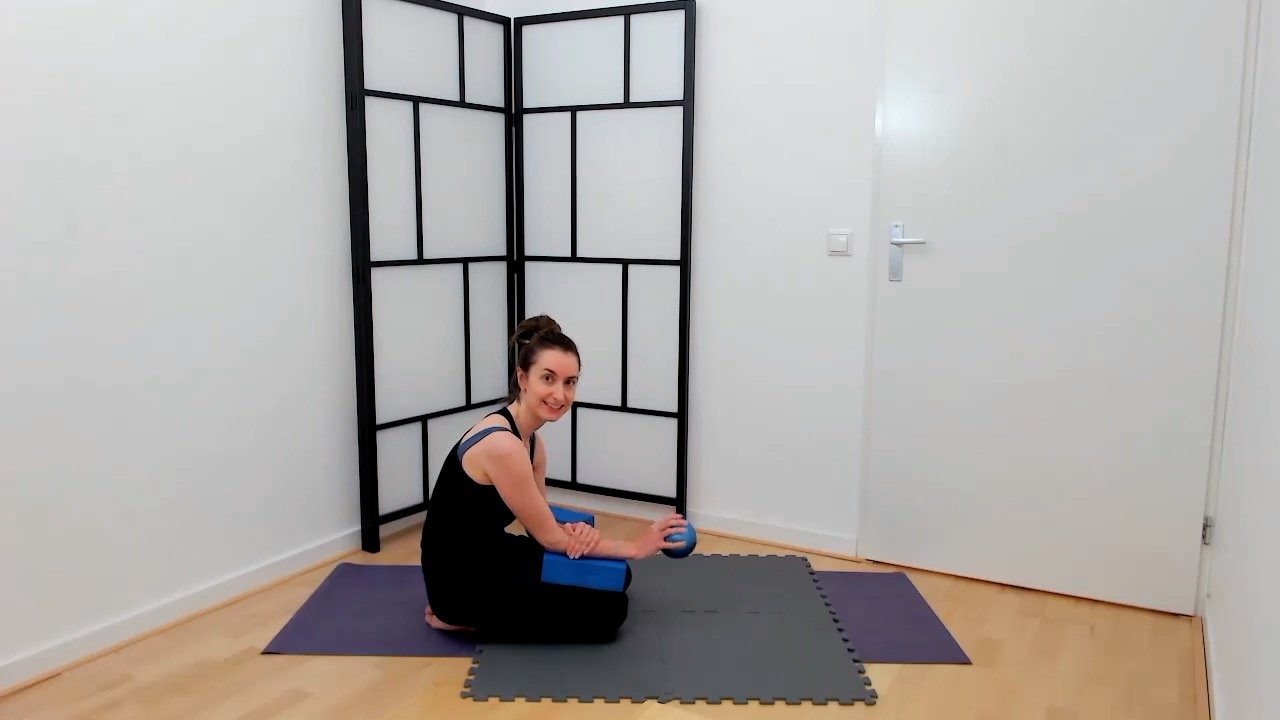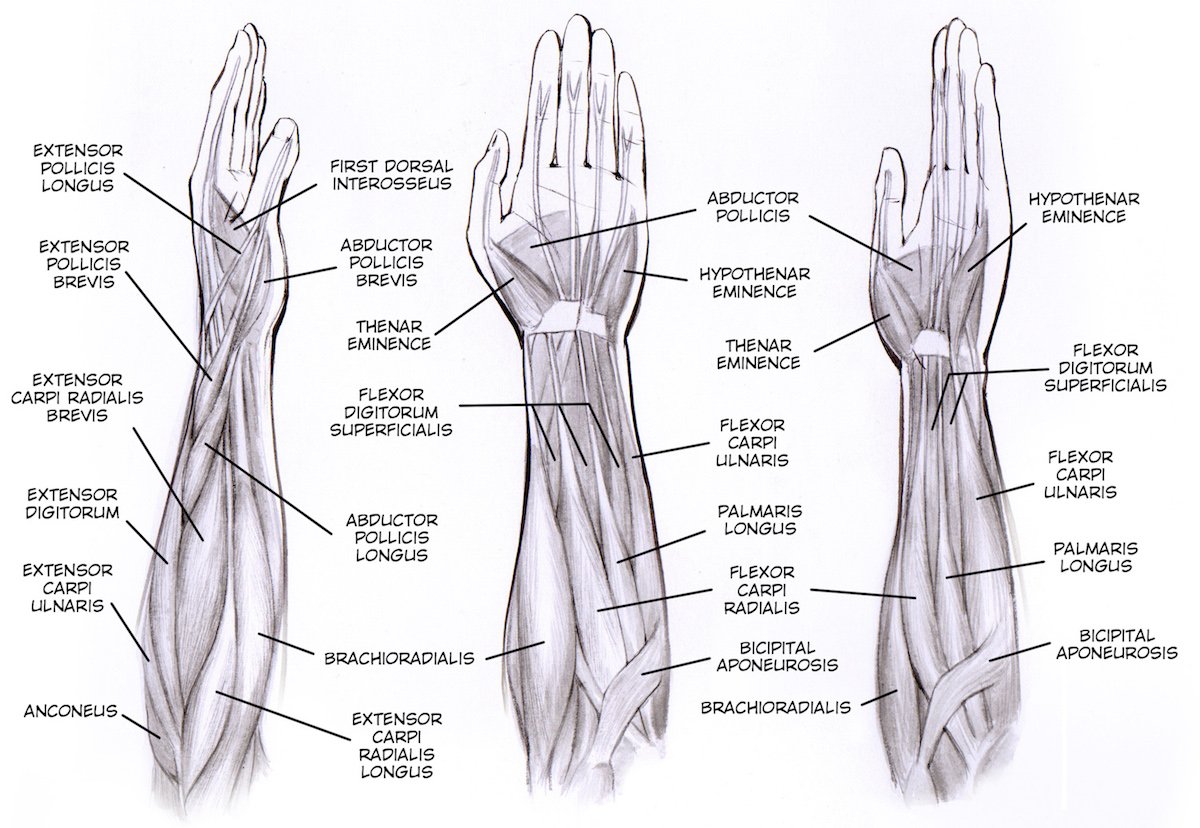“I’m having trouble holding a plank position because my wrists do not feel strong enough”.
Yes, tell me about it!
Not only have I learned how to deal with my own ‘weak-feeling wrists’ over the years (and succeeded in ditching the wrist tape, wrist straps, and wrist supports), having wrists that don’t ‘feel strong enough’ is such a common experience that I decided to share a whole host of ideas in an attempt to help you out.
This post is part of a series designed to give you more options than:
‘Just skip it’
‘Put your knees down’, or
‘Do child’s pose instead’
Because? We’re adults goddammit! We can deal with things and learn to do stuff we used to find too difficult.
You can start this series in any order and you don’t need to perfect one set of options before trying out the next. Simultaneously working on mobility and strength – plus learning to adapt what you need to adapt – is a solid approach for most people without an acute injury. (Do your wrists feel like they’re about to fall off? Friendly reminder! You need a doctor, not a yoga teacher.)
Part 1: Mobilise
Part 2: Strengthen (scroll down)
Part 3: Adapt (coming soon)
Can you take small and consistent steps to build strength?
Firstly, it might be helpful to get a basic idea of what your wrists look like beneath all that skin, so you can get a sense of what you’re working with.
“Your wrist bones are connected to your…”
You might think of your wrists as the narrow-knobbly-bony things that connect your arms and hands and: you’re right of course! The bumpy bits you can feel are your wrist joints (where your arm bones make contact with your hand bones).
Have a look! And don’t worry, this is not an exam. You don’t need to learn the names of things:
Cropped 3D illustration of the wrist bones. Source: Scientificanimations.com, CC-BY-SA-4.0.
These bony bits make moving your wrists (forearms and hands) possible, but your wrists can’t move without the support around them: your muscles [1]. Most of these muscles are not located ‘in’ (or even ‘around’) your wrist, but your forearm.
Take a peek! Again, ignore the labels unless you are super duper interested.
‘The human hand is an exquisite instrument’: diagram of the forearm muscles from different angles. Source: Backyard Brains ‘signal classification’ experiment.
Wow! That’s just your forearms: imagine the rest of you! Building a basic picture of our inner workings can help us appreciate that our body parts (even the ‘problem’ parts) are still pretty damn cool.
As you test out the movements below, you might start to notice that the ‘feeling of strengthening’ encompasses not just your ‘wrist area’, but expands to the sensation of muscles moving (and tiring) in your forearms. These are broadly called your wrist ‘flexors’ and ‘extensors’, but it might be more useful for you to think of them as your ‘wrist benders and stretchers, and finger movers’ (Blakely: 15).
Auto-generated captions are enabled on these clips. To view them: press play, and click ‘cc’ to the right of the volume control at the bottom of the video player.
Simple weighted wrist movements
You can sit in any position: chair, sofa, floor.
I’m using a 1kg soft Pilates weight in this video (which is light for me). You could start with an apple, or a can of beans, and gradually increase the weight as your confidence and strength grows with consistent practice (i.e. a few times a week).
Palm raises
If you can’t do these on the floor, try placing your hands against a wall and give them a go from there.
Palm curls
If the floor is a no-go, you can try these by placing fists against a wall.
Some answers to your questions
How can I fit these into my yoga and movement class?
If building wrist strength is something you’d like to focus on, you could try these movements before, after, and in-between classes and see if they help. During the class, perhaps you can try adding these movements between (or in place of) the things that feel too challenging, or too sore for your wrists (right now).
Do I need to do these in a set order? How many times?
Where strength training is concerned approx. 3 rounds of 6–8 repetitions (3 times a week) is a general guideline, but everyone will be a bit different. It very much depends on the amount of weight you are using and your perception of how difficult it feels.
You do not have to do these in a specific order and you do not have to do them all. Pick one, try it a few times a week, see what happens, and stick with the one(s) you like and/or feel to be the most helpful.
How should it feel? Am I doing it right?
These might feel a bit awkward and you might have the sense that they are ‘more difficult to do than they look’, especially to begin with. Do a little, see how your body responds, maybe do a little more, or less. You’d have to put in sooooo much effort to go wrong: have you placed a 100kg set of weights on your back? No? Ok, you’re probably good.
Is your question unanswered? Leave a comment below, or send me an email.
Notes and references
[1] Also your tendons (that attach muscles to bones) and ligaments (that connect bones to other bones) that I have wilfully excluded for simplicity.
Paul Blakely, The Muscle Book (2013), Pennsylvania: Himalayan Institute. [This book is great as a really basic intro to anatomy for adults; the pictures are clear and simple and I still use it as a quick reference guide. But – and it’s a big BUT – it’s very outdated and there’s a lot of whacky stuff that has no place in any practice, or profession (like: your muscles are tense because you can’t ‘let go’ of something). Use it to feed your curiosity, but heed the utter bullshit warning and stick to the basic diagrams.]





